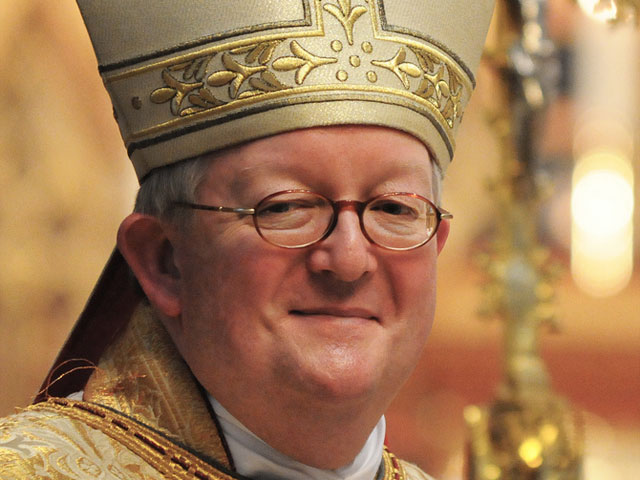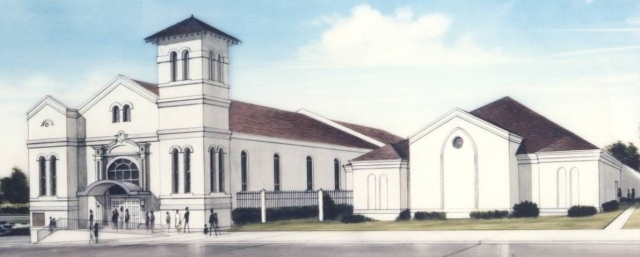The New York Times may not love American conservatives, but they are certainly enamored with a British one, David Cameron. His push to introduce gay marriage in England, over the objections of the rank and file members of his party, has the paper swooning.
There does not seem to be a way to keep gay issues or advocacy out of the New York Times. The Gray Lady finds this angle in just about any story. Today’s example comes in an article that combines the news of the confirmation of election of the new Archbishop of Canterbury Justin Welby with the first vote in Parliament on the government’s gay marriage bill.
Unfortunately the article tries a little too hard to link these stories. Combining the two events may have seemed a good idea to an editor not familiar with the issues, but it does not work as a single piece. “New Archbishop of Canterbury Takes Office” has some factual errors, faulty assumptions, insufficient context and a lack of balance.
The article begins:
On the eve of a divisive vote in Parliament on the legalization of same-sex marriage, Justin Welby, the former bishop of Durham, on Monday took over formally as the 105th archbishop of Canterbury, the spiritual head of the world’s 77 million Anglicans, saying he shares the Church of England’s opposition to marriage among people of the same gender.
The lede is fairly straight forward, but I wondered why the author tortured the opening with such strained language — “marriage of people of the same gender”. Have I missed a new style directive to mimic “people of color” when describing gay issues?
And, how many Anglicans are there? The New York Times says 77 million. In the interview cited later in the story, the archbishop says 80 million — which includes 20 odd million Englishmen and women (when only a tenth of that number attend services). What is the source for this number? But I digress.
The article notes the new archbishop took office today replacing Dr. Rowan Williams, and then moves to a post-ceremony interview.
In an interview broadcast on the BBC after his inauguration, the new archbishop said he was not on a “collision course” with the government. But he endorsed the traditional view that while the church has no objection to civil partnerships between people of the same gender, it is, as a recent church statement put it, “committed to the traditional understanding of the institution of marriage as being between one man and one woman.”
This paragraph also struck me as odd. Not for what it reports about the new archbishop’s sentiments, but in its report of who reported what. The BBC story did not have the “collision course” phrase. That appears in an ITV story. The story broadcast by the BBC I saw cut the “collision course” phrase, while ITV ran the segment uncut. Perhaps there was a second BBC story that used the quote? I do not know. The Religion News Service printed at the Huffington Post account of the ceremony made this mistake as well, but it embedded both videos — BBC and ITV — with their story.
The article then moves to commentary.
His stance did not come as a surprise since he had made it clear at the time of his appointment in November, but the timing of his remarks was certain play into both the political and the ecclesiastical debate about the issue. The church has long been locked in debate over gender issues, including the consecration of female and gay bishops and same-sex marriage.
Now I understand the language of the lede — gender is the plat du jour for the Times allowing it to link the women bishops vote to the same-sex marriage vote in Parliament. (Wait, it is now same-sex marriage by paragraph six.) The article notes:
In December, the church voted narrowly to reject the notion of female bishops, despite support from senior clerics including Archbishop Welby. In January, the church followed up with a ruling admitting openly gay priests in civil partnerships to its ranks, provided that, unlike heterosexual bishops, they remained celibate.
Some more mistakes here. The women bishop’s vote took place in November, not December 2012. Clergy were permitted to register gay civil partnerships in 2005 not in January 2013. A condition of their being allowed to register these domestic partnerships was that they be celibate. Clergy may be “openly gay”, whatever that means, but may not engage in sexual relations outside of marriage (marriage being defined as being between a man and a woman). The question of how rigorously this is enforced is a separate matter.
In December 2012 the House of Bishops ended a ban imposed in 2011 that forbade clergy who had entered into a civil partnership from becoming a bishop. Heterosexuals may not contract civil partnerships in Britain, so the analogy offered by the Times is inexact. However all bishops — heterosexual and homosexual — who are unmarried must be celibate also. There have been homosexual bishops for quite some time — by homosexual I mean men whose dominant sexual attractions are to other men. However, these bishops do hold to the church’s teaching that to act upon these inclinations would be sinful, and are celibate.
Using the pivot of homosexuality, the article then moves to the House of Commons.
Parliament is set to vote on Tuesday on a proposal to legalize same-sex marriage that has been championed by Prime Minster David Cameron. The issue, however, has inspired one of the most toxic and potentially embarrassing rebellions among Mr. Cameron’s Conservative Party colleagues since he took office as the head of a coalition government in 2010.
British news reports have suggested that as many as 180 of the 303 Conservative Party members of Parliament might oppose Mr. Cameron or abstain from voting.
Here we have a “yes, but” situation. Yes, the Second Reading of the government’s bill that would legalize same-sex marriage and allow those in civil partnerships to convert them to marriages is set for tomorrow. However, the issue will not be decided tomorrow. Here is a link to Parliament’s web page describing what happens at a Second Reading. MPs will be given a chance to discuss the bill and vote on whether it should be sent to a committee or be kept before the House of Commons as a whole.
The leaders of the three main parties — Conservative, Liberal Democrat, Labour — support the bill. A vote to send it to committee where they appoint the members is a way to prevent the issue from being debated before Parliament as a whole. Voting to keep it before the House allows greater involvement from backbench MPs. There is an element of political gamesmanship here. While Labour is in favor of the bill, they are also in favor of allowing the Tories to do as much damage to themselves as possible. Keeping the bill before the whole House allows the Conservative rebels to give full voice to their displeasure with their party leader, weakening the prime minister.
The Times however quotes the leader of the opposition Labour Party, Ed Miliband but displays an acute lack of awareness of what really is going on.
Ed Miliband, the leader of the opposition Labour Party, said Monday that he would be “voting for equal marriage in the House of Commons, and I’ll be doing so proudly.” He also said he would urge his 255 legislators in the 649-member body to vote with him. “I’ll be voting for equal marriage for a very simple reason: I don’t think that the person you love should determine the rights you have,” Mr. Miliband said.
The Times neglects to mention the political calculus involved in the passage of the bill, which when it goes to committee is then subject to amendment before it goes to the House of Lords. If the Times wanted to tie the Church of England into this story more tightly it could have mentioned that all of the active bishops who sit in the House of Lords will vote “no” and may offer wrecking amendments. And, Miliband’s urging his party’s MPs to vote for the bill is a recent change — Labour was going to make this a party line vote, requiring all its MPs to vote the same way, but senior leaders of that party refused to go along — changing Miliband’s song from must vote to should vote for gay marriage.
The article then closes out with two quotes from a government spokesman who dismisses the church’s objections to the bill — but offers no rejoinder from the Church of England, the Catholic Church (which by the way is also strongly opposed) or MPs who are opposed to the legislation.
So what do we have in this story. Minor points such as the BBC v. ITN. Larger mistakes such as dates of actions and the misstatement of actions. Omission of context and explanation — as written a casual reader would assume that gay marriage was about to be passed, when it has only just started its legislative journey. And a lack of balance coupled with the framing of the story in such a way as to make clear the Times‘ support for gay marriage.
Should we expect better of the Times? Is this story an example of carelessness or bias? What say you Get Religion readers?











